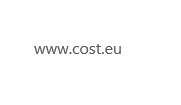What is INDAIRPOLLNET?
Challenge
In developed countries, we spend 80-90% of our time indoors, where we receive most of our exposure to air pollution. However, regulation for air pollution focuses mainly on outdoors and the indoor environment is much less well characterised. The concentrations of many air pollutants can be higher indoors than out, particularly following activities such as cleaning and cooking. With increasing climate change impacts, related energy efficiency measures are making buildings considerably more airtight. Such measures can increase indoor pollutant concentrations even further. Therefore, to reduce our exposure to air pollution, we must consider both the indoor and outdoor environments and the role of ventilation, in order to mitigate through appropriate building operation, use and design.
Aims
The overarching aim of this network is to define a blueprint for the optimal indoor air chemical characterisation campaign, which is relevant for the buildings we use and for the way that we use them.
Action objectives
INDAIRPOLLNET (INDoor AIR POLLution NETwork) will improve our understanding of the cause of high concentrations of indoor air pollutants. It will assemble experts in laboratory and chamber experiments, modelling studies and measurements of relevance to indoor air quality (IAQ), including outdoor air chemists. This Action aims to significantly advance the field of indoor air pollution science, to highlight future research areas and to bridge the gap between research and business to identify appropriate mitigation strategies that optimise IAQ. The findings will be disseminated to relevant stakeholders such as architects, building engineers and instrument manufacturers.
We have the following research coordination objectives:
- Improved understanding of indoor air pollution
- Improved and/or new techniques for indoor air chemistry measurements
- Improved indoor air chemistry models
- Improved buildings for the future
- Improved standardisation protocols
- Identification of potentially harmful species in indoor air
- Data collation, review and formation of rigorous recommendations for future indoor air pollution science
- Knowledge transfer towards policy makers and other stakeholders with an interest in indoor air quality
and we also have a number of capacity building objectives:
- Development of a new scientific community at the interface of outdoor an indoor air chemistry
- Maximise research collaboration in Europe
- Submission of future proposals
- Scientific training
- Dissemination
Links between working groups

Diagram of Action
Who are we?
Our network includes experts in chemistry, biology, standardisation, particulate matter characterisation, toxicology, exposure assessment, building materials (including those manufactured specifically to improve IAQ such as green materials), building physics and engineering (including ventilation and energy) and building design.
Documents
The COST Action CA17136 started on 7th of September 2018 and will end on 6th of September 2022.
- You can find the aims and plans of the Action from Action Memorandum of Understanding (MoU).
- Visit also the COST webpage of our COST Action CA17136 INDAIRPOLLNET
- For general COST rules see the COST Vademecum







